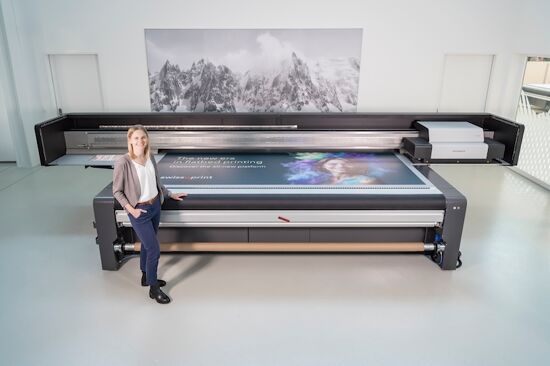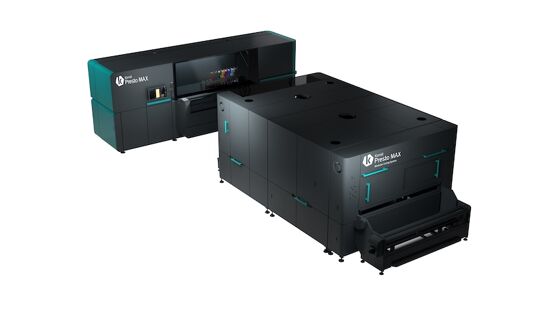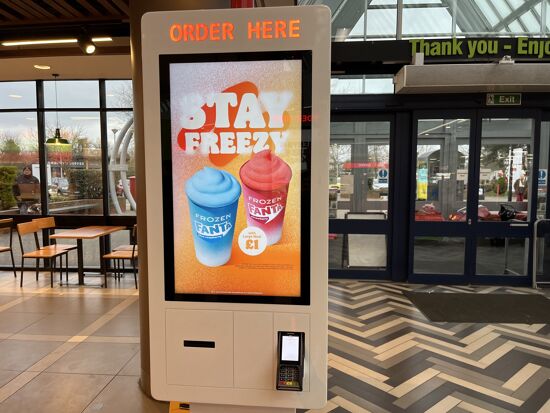The 3 simple steps to planning successful wide format campaigns
Have you ever heard that print is dead? Well, if you have, I’m sure you disagree, especially when we look at the development of digitally printed options.
So, the industry is far from dead, but rather brimming over with exciting new solutions and opportunities.
But with such a wide array of applications offered especially in the wide format area, it’s quite a challenge to properly plan for a successful campaign. Your preparations should include the actual installation and use of the print, to ensure the optimal usage.
For some applications like self-adhesive materials on windows you might not even have the skills or knowledge to apply the material in a way that looks nice, or have the time or knowledge to take them down again in a fast and efficient way. In this case it’s likely that the best option is to ask the supplier to include both the on-site installation and the removal, as being part of the total price of the print project.
The light matters
When planning for prints that are to be viewed indoors, and if colour accuracy matters to you, you need to be aware that the perceived colour in the images, including logos, very much depends on the light source that is used.
While the graphic arts industry has agreed to evaluate prints and proofs at a standardised light condition called D50 (a simulation of Daylight at a whitepoint of 5000 Kelvin), this is not necessarily what will be in the area where your posters or indoor signage are supposed to go.
In fact – it’s very unlikely that you will find such special light tubes used anywhere other than in a dedicated viewing booth. So why bother with using a standardised light like D50 at all? The reason is that if we didn’t, prints and proofs would look very different for everyone accessing if they match the colours we expect to achieve in prints.
The D50 standard doesn’t only define the white point of the light, it also defines the spectral distribution of the light. It tries to create a pre-defined environment so that what the press operator looks at by the press or digital printer is very, very similar to what the print buyer, designer or photographer looks at when evaluating the contract proofs.
So, if all parties use D50 when evaluating proofs and prints, we have common ground if we feel that colour needs to be adjusted. On top of this you should assess the prints in the final ambient light, and check if the appearance still is to your satisfaction.
A colour-savvy prepress department can adjust the viewing conditions for a specified ambient light, and so better match the colour separations according to this.
The appearance of colours very much depends on the light source, so if you want high colour accuracy you should adapt the reproduction of the images to the actual light of the viewing area.
Wrap it up!
A popular application is customised print using shrink wrap materials, for example on vehicles. If you are creative you can shrink wrap many other objects and so customize them to fit into your print project and campaign.
But make sure the print firm has plenty of experience with this, because not all types of substrates stretch as much or as well as others, and not all types of substrates are suitable to use, for example together with food or drinks.
There are lots of rules and regulations applying to print used with food and drinks, so even if you are excited about a brilliant idea for, let’s say, a custom-made coffee cup, don’t think that you are exempted from applicable laws and rules just because you aren’t a typical vendor of beverages or similar.
Once you distribute an item which is likely to touch food or drinks you need to comply to the laws and regulations like everyone else in the industry.
Other applications where you should be careful to check what rules apply, is if it’s likely that the printed matter will reach children. There is legislation and certification related to health and safety as well as environmental impact.
The Greenguard certification confirms that ink from vendors such as Efi, HP and Mimaki are safe. These certificates confirm that the inks are suitable for use in environments such as schools and healthcare facilities. So be on the lookout for vendors of inks and substrates who focus on sustainability, and favour them in your choices of materials for your projects.
You can create customised or personalised labels like this limited edition Absolut when using digital printers. Just make sure you adhere to rules and regulations for food and beverage when you do!
Transport and distribution
Wide format print projects typically involve large printed objects and, if you don’t consider the choice of substrate, the cost of transport and distribution can run away with you. Banners, for example, have traditionally been printed on thick vinyl, sometimes for durability (vinyl can withstand both rain and sunlight if printed with suitable inks).
But there are several alternative substrates that have similar properties to vinyl in regard to durability, for example canvas made of Polypropylene. A Polypropylene-based substrate can weigh 10% less than comparable thick vinyl alternatives, but in many cases work equally well.
A substrate weighing so much less is not only cheaper to transport and distribute, it’s also much easier to handle for those installing the print. So, ergonomics should also be included when planning your print projects.
Increasingly professional print firms provide a distribution and rapid installation service which saves you and your staff time and effort. So, outsource when and wherever it makes sense, and you will save yourself time, stress and resources.
Dare to print different at FESPA 2017
What further could you be doing to support your own business growth? Should more support be given to high growth companies? FESPA invests heavily in supporting business through education, subsidised events, training programmes and curated conferences, both standalone and at exhibitions.
The next occasion will be FESPA 2017, taking place from 8-12 May 2017 at the Hamburg Messe in Hamburg, Germany.The leading wide format event will bring together innovation, education and inspiration across screen, digital and textile print.
Dare to Print Different celebrates the rich technology and materials innovation that is always at the heart of FESPA, and its role in helping printers to fulfil their potential and differentiate themselves through new products and business models.
Print service providers will also be able to get inspiration to build stronger and more innovative businesses through exclusive presentations and case studies from industry experts.
The new FESPA 2017 website is now live at www.fespa2017.com, and visitors can register immediately online to obtain entry free of charge to the event, and ensure that they are kept updated as the full event programme develops.
- To register, visit: www.fespa2017.com, using promotional code FESG702
for free entry - For discounted flights with FESPA’s official airline partner, visit: www.fespa2017.com/about-fespa-2017/international-visitors
- For Hamburg tourist information, visit: www.hamburg-tourism.de/
About the author
Paul entered the graphic arts industry in 1980, first as a typographer and graphic designer, later as production manager. He act as Senior Technical Editor at Digital Dots and is one of the founders.
In parallel he lectures part time for the Graphic Arts Departments at Malmö and Copenhagen Universities. Since 2008 Paul is an UKAS accredited auditor for ISO 9001 and ISO 12647 certification. He is also an appointed expert to ISO TC130, the international technical committee responsible for authoring ISO standards for print media production.
Topics
Interested in joining our community?
Enquire today about joining your local FESPA Association or FESPA Direct
Recent news

The importance of ink for large format printers
Ink is crucial for large format inkjet printers, influencing substrate compatibility, productivity, and cost. Nessan Cleary discusses the three main types which include UV-curable ink, latex ink and eco-solvent ink. Each ink type has specific strengths and weaknesses, making printers choice dependent on budget and intended applications.

What are the benefits of Direct-To-Fabric printing?
Direct-to-fabric printing is gaining popularity for high-volume textile production, enabling on-demand, customized short runs. These printers offer ink flexibility, accommodating various fabric types like cotton and silk, though ink development focuses on faster turnaround by reducing pre- and post-processing. Compared to traditional methods, direct-to-fabric inkjet printing is a more sustainable option due to reduced water and chemical usage, and localized production.

What are the opportunities for large format providers regarding digital touch screens?
Digital touchscreens are becoming increasingly common, offering businesses opportunities to improve customer engagement and streamline operations. Nessan Cleary shares, while more expensive to implement than standard digital displays due to complex software and integration needs, touchscreens provide self-service options, multilingual support, and can reduce staffing costs in various settings like retail, transportation, and healthcare.
